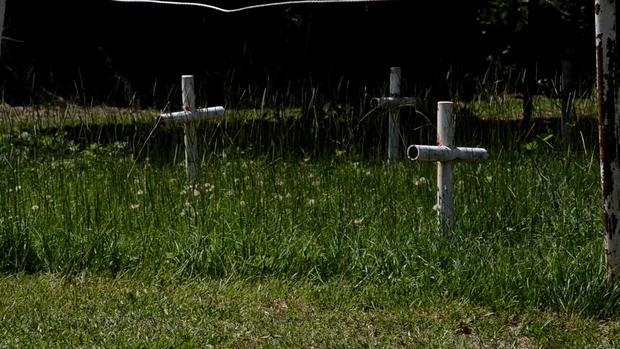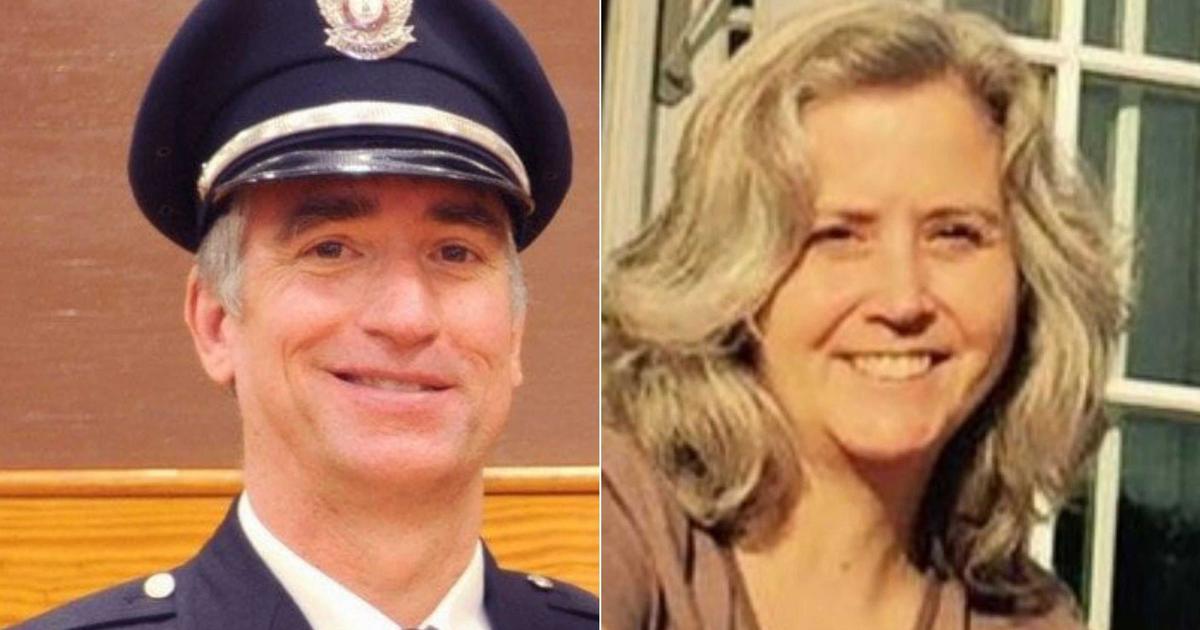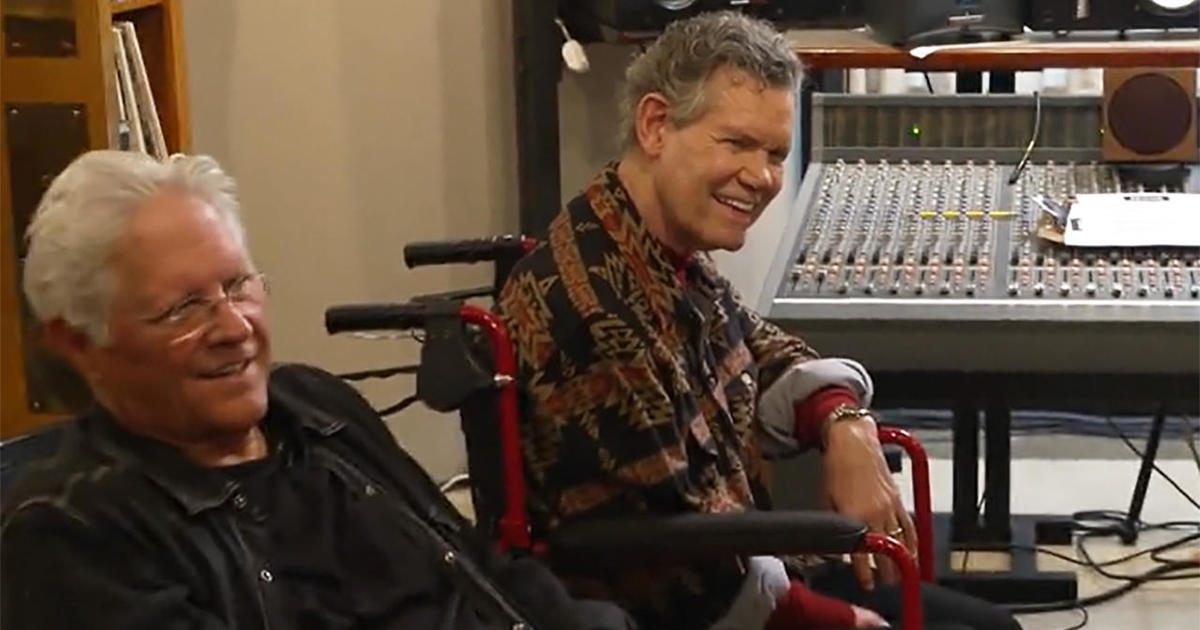The Search for the Dead: Families of boys who died at shuttered Dozier juvenile detention facility seek answers
Editor's note: This story is the first in a four-part Web series about the former Dozier School for Boys, a shuttered Florida juvenile detention facility that garnered a lasting reputation for brutality. 96 boys died while incarcerated there, and 45 are believed to be buried at the site. As reported by the CBS Evening News, Florida officials voted this week to begin exhumations there. Read the entire Web series, "The Search for the Dead."
- The Search for the Dead, Part 1: Families of boys who died at shuttered Dozier juvenile detention facility seek answers
- The Search for the Dead, Part 2: Former inmates at shuttered Dozier juvenile detention facility detail alleged abuse
- The Search for the Dead, Part 3: Victims of alleged abuse at shuttered Dozier juvenile detention facility push for justice
- The Search for the Dead, Part 4: Exhumation of bodies set to begin at shuttered Dozier juvenile detention facility
(CBS) MARIANNA, Fla. -- On an overcast January morning in the remote Florida panhandle town of Marianna, a metal Badger wrenched the rural silence with its motorized bucket, burrowing the earth in search of graves. Each shovelful of dirt thickened the air with insects as a small group of scientists from the University of South Florida looked for clues in the soil, planting orange flags where they suspected a child's body was buried beneath. CBS News had been invited to witness the search.
Thirty-one metal crosses, coated in peeling white paint, were planted a hundred yards from where forensic anthropologist Dr. Erin Kimmerle excavated for grave shafts. Erected by a local troop of Boy Scouts, the crosses served a symbolic rather than substantive purpose. Dr. Kimmerle's team was searching for what those crosses and Florida's Department of Juvenile Justice could not provide. They were looking for the exact burial sites of at least 45 boys who died and were buried on school grounds while in the state's custody.
PICTURES: Historic Photographs: Dozier School for Boys
According to state records, 96 boys died while incarcerated at the Dozier School for Boys, formerly known as the Florida State Reform School and the Florida Industrial School for Boys. Opened at the turn of the twentieth century on 1400 hundred acres west of Tallahassee, the juvenile detention facility quickly earned a lasting reputation for brutality. That legacy haunts its former inmates as well as the families of boys who died mysteriously at the school and whose bodies have yet to be found.
On Tuesday, state legislators approved a plan to let researchers excavate for human skeletal remains at the school. That means they can, for the first time, start bringing up the bones of boys buried at the school. DNA testing to match for identities will soon follow and the search for truth can begin.
THE DEAD
On September 21, 1934, 13-year old Thomas Varnadoe was sent to the Florida Industrial School for Boys, as it was then called. He and his 15-year old brother Hubert had been accused of stealing a typewriter from the back porch of a woman's house. They frequently used her yard as a shortcut home from school.
Despite their protestations of innocence and an inability to locate the stolen item, the local sheriff decided to send both boys immediately to the reform school nearly three hundred miles away. Almost eighty years later, the only evidence that remains of the boys' alleged crime is their names written in the school's inmate logbook along with their ages, parents' names and crime, "malicious trespass."
Richard Varnadoe, who was 6-years-old when his brothers became wards of the state, says having them taken away was a devastating blow to the family. "The only way I know to explain it. My mother cried for a week about that. And of course I did too. I grew up without Thomas. It wasn't easy."
And it soon got worse. Thirty-five days after being admitted to the Florida Industrial School for Boys, Thomas was dead.
"I know that we only got a letter from the school up there that he was dead and had been buried. And all that had happened without even notifying the family. Something wrong with that picture," Richard recalls.
The death certificate cited cause of death as pneumonia.
"I don't believe that. I've got no way of proving anything. No way. But that doesn't alter the fact that I don't believe it. He was healthy when he left home. I can vouch for that."
Hubert, the brother sent to Marianna with Thomas, never spoke of what happened at the school for fear he would be sent back. When Hubert died years later, his son, Glen, decided to bring home the body of the uncle he never met. But when Glen went to the school and requested an exhumation the school came back with an answer he never expected. They had no record of where his uncle was buried.
The school couldn't tell Ovell Krell Smith, a retired Lakeland police officer, where her brother was buried either. In the summer of 1940, Ovell's 14-year old brother, Owen Smith, was sent to the Florida Industrial School for Boys accused of wrecking a stolen car.
Shortly after arriving at the school, Owen tried to escape but was captured. In a letter home to his family, Owen said upon his return that he "got what was coming to him." Despite the threat of further punishment, Owen escaped from the school again in December 1940 with another boy. Only this time, Owen was never seen alive again.
On January 1, 1941 the school's superintendent, Millard Davidson, sent a letter to Owen's parents. It read, "...so far, we have not been able to get any information concerning his whereabouts."
Owen's mother replied to the school announcing intentions to travel to Marianna in search of her son. As the family prepared to travel north, they received further communiqué from the school. A telephone call alerting them that Owen's body had been found underneath a home in a residential area, miles from school property.
School officials said Owen's body was so badly decomposed they couldn't determine cause of death, but suspected he had perished from the cold. Owen's family didn't believe them.
"The boy who ran away with Owen said the last time he saw Owen, guards were shooting at him as he ran across a field," Ovell Krell Smith told CBS News.
The family asked that Owen's body be taken to a local mortuary where they would collect his remains. But when 11-year old Ovell and her parents arrived in Marianna, school employees pointed to a plot of recently disturbed soil as the site of Owen's final resting place.
The rector of a nearby Episcopal Church later wrote to the Smith family, consoling them with the knowledge that he had performed the burial service for their son. In his letter V.G. Lowery wrote, "It was in the Burial Plot of the School, that is kept nicely cleaned and cared for, and will be looked after in the years to come."
That letter is the only proof that Owen's body was buried in Marianna. In fact, it's the only proof that he died at all. According to Ovell, she's been unable to get a death certificate for Owen, not even the Bureau of Vital Statistics has a record of him dying.
Both the Varnadoes and the Smiths left wondering, for decades, about the fate of their loved ones. Richard says he just wants his brother back to be buried beside their mother, so that she might finally be at peace.
"It seems now that we are closer to finding answers than we have ever been. I hope it's true. I hope we are going to have some answers. Like I said, I'm not after any criminal charges, not after no money. All I want is my brother."
Read the next installment in the four-part Web series:
The Search for the Dead, Part 2: Former inmates at shuttered Dozier juvenile detention facility detail alleged abuse
.jpg?v=1d6c78a71b7b6252b543a329b3a5744d#)





